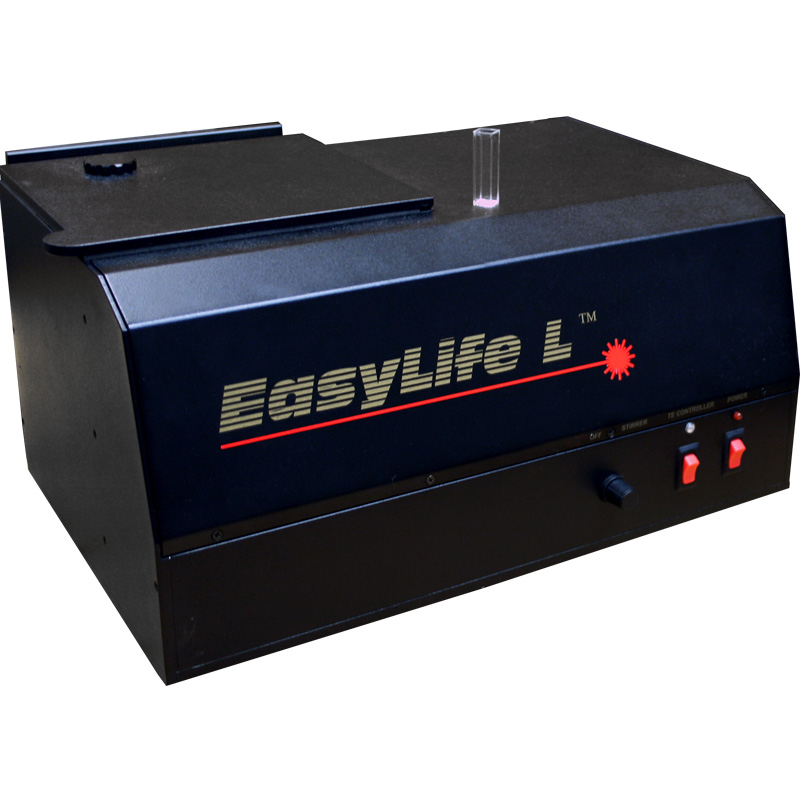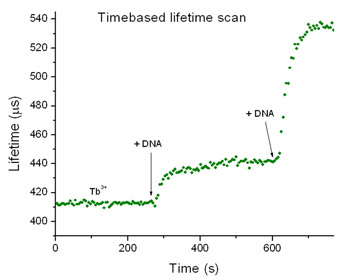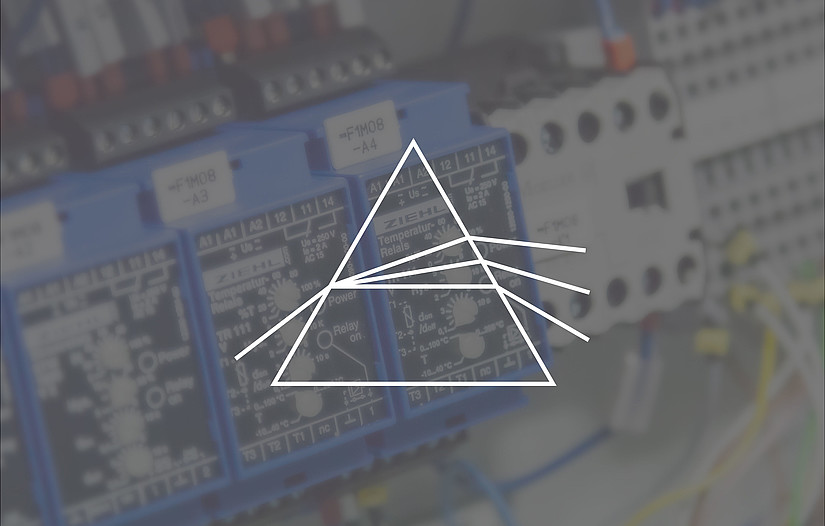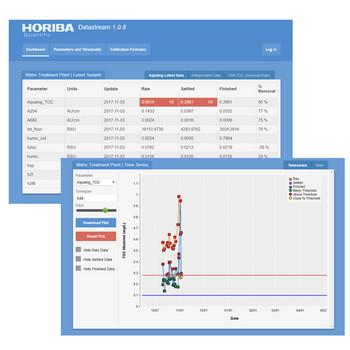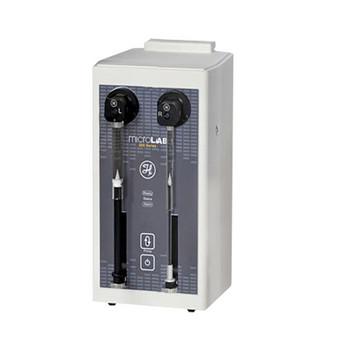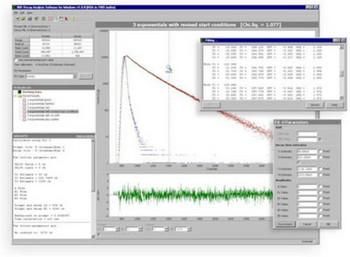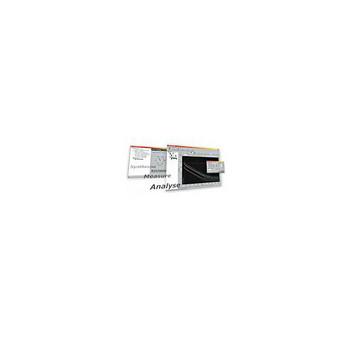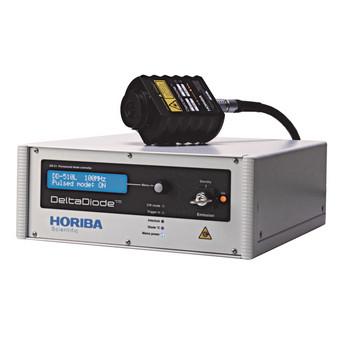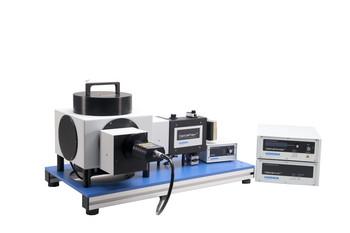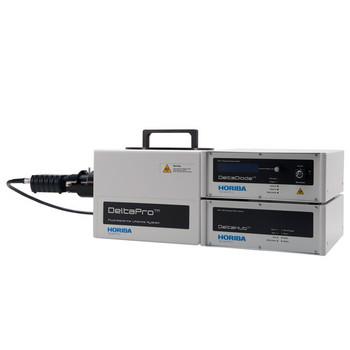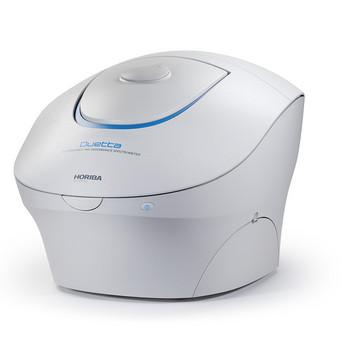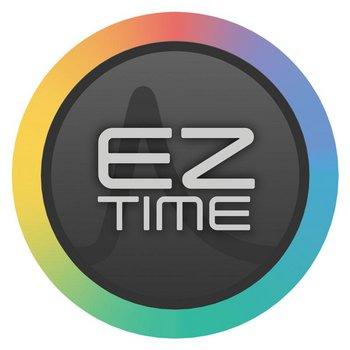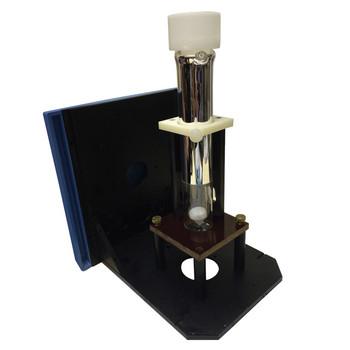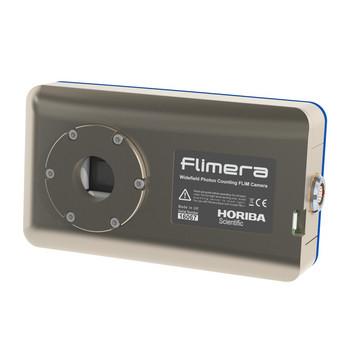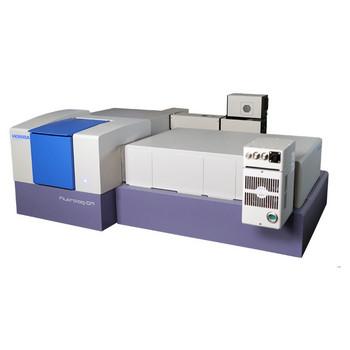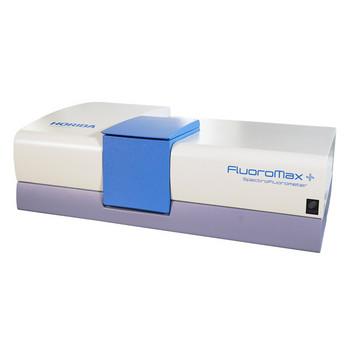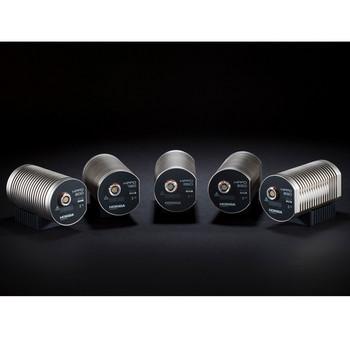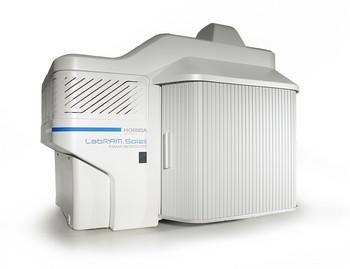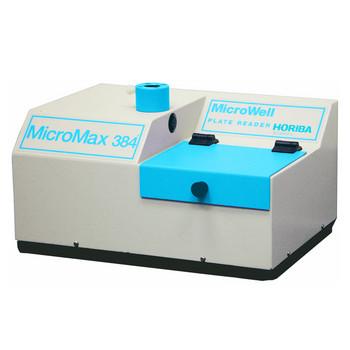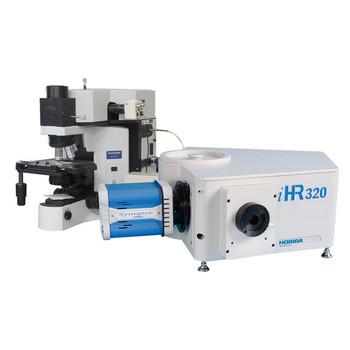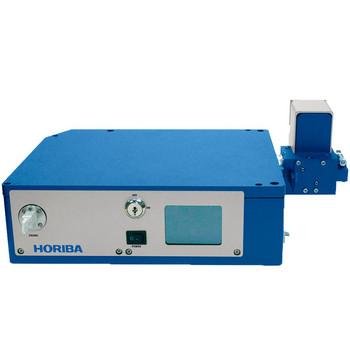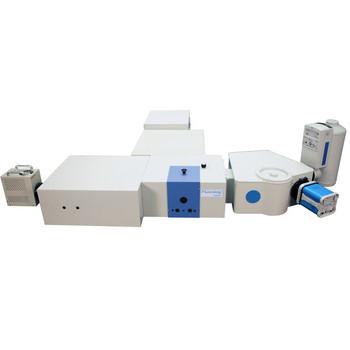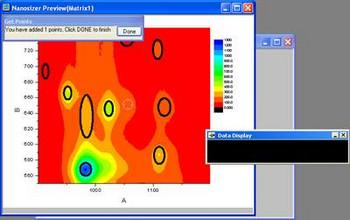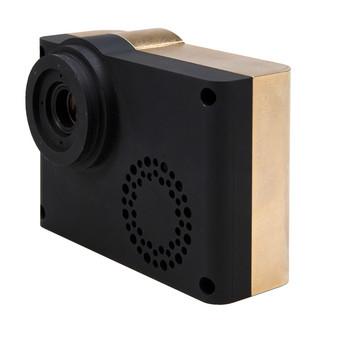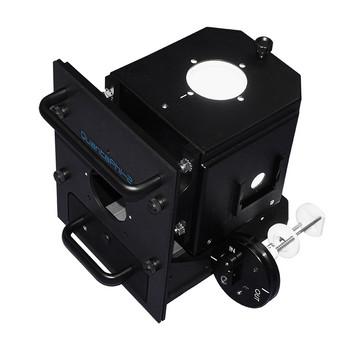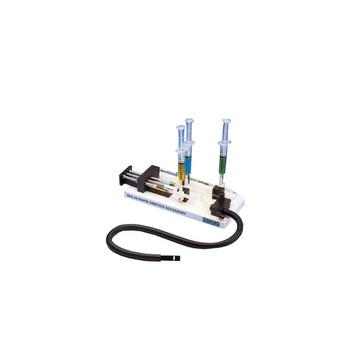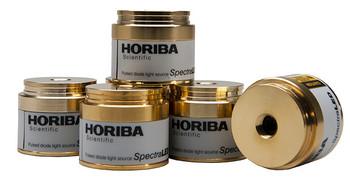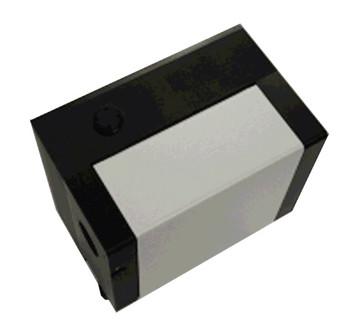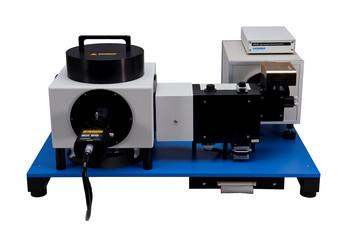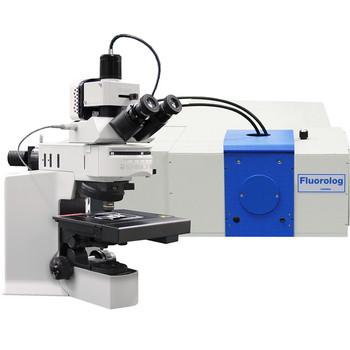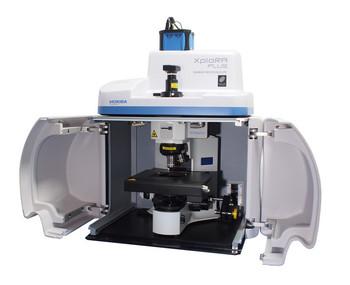Lifetime range | A few microseconds to 300 ms |
Multiple Automatic Lifetime Fitting | 1 to 4 exponential |
Excitation | High powered pulsed xenon lamp |
Repetition rate | 1 to 500 Hz under software control |
Optical pulse width | 4 µs (FWHM) |
Excitation range | 200 to 2000 nm |
Emission range | 185 to 680 nm, optional to 900 nm |
Emission wavelength selection | 1 inch round bandpass and longpass filters |
Sample temperature control | Air-cooled Peltier under software control |
Temperature range | 20 to 50 ° C |
Sample stirrer | Built in, variable speed |
System control | FluoroScan software |
Dimensions | 16.9 x 11 x 7.7 inches |
Weight | 12 lbs |
 Este produto foi descontinuado e não está mais disponível. Você ainda pode acessar esta página para fins de serviço informativo.
Este produto foi descontinuado e não está mais disponível. Você ainda pode acessar esta página para fins de serviço informativo.
EasyLife L
Phosphorescence Lifetime Spectrometer
Low cost phosphorescence spectrometer from few microseconds to 300 milliseconds
Though it is small and inexpensive the EasyLife™ L out-performs all other pulsed fluorometers
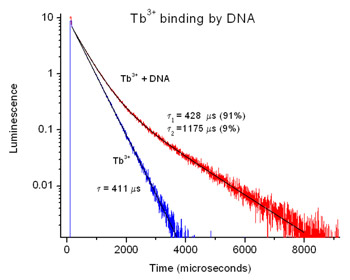
Terbium luminescence is enhanced upon binding to DNA
An Exceptionally Fast, Sensitive and Accurate Luminescence Spectrometer for LRET Assays and General Luminescence!
The EasyLife™ L is a unique, affordable phosphorimeter. Using our proprietary 'single-shot' detection technique, the EasyLife™ L is lightening fast and ultra sensitive. For each pulse of the Xenon lamp, the system collects an entire decay curve. Since it can be run at up to 500 HZ, the EasyLife™ L can collect, sum and average up to 500 complete decays in a single second. Not only does this provide instantaneous results, but it also significantly enhances the signal to noise of your luminescence research.
Able to accurately measure lifetimes from a few microseconds to 300 ms, the EasyLife™ L is the ideal system for Lanthanide Resonance Energy Transfer (LRET) based kinase activity assays. And it is so easy to use that literally anyone in your lab can operate the system.
Unique Lifetime Kinetics Acquisition Protocol
The EasyLife™ L is the only commercial system available that measures Lifetime Kinetics. If you are familiar with using a fluorometer for time-based kinetics you are familiar with collecting the steady state intensity as a function of time to monitor kinetics and reactions. The EasyLife™ L can acquire data in a similar way except that instead of the intensity changing with time the EasyLife™ L acquires the measured lifetime as a function of time. The time duration of this measurement can be from a few seconds to many hours. Without concern for possible intensity fluctuations in your sample, this acquisition protocol lets you actually see when the lifetime changes. We believe this unique capability, will become an essential tool for LRET and a wide variety of other emerging applications.
|
The binding kinetics of Tb3+ to DNA can be followed free of intensity artifacts by using the unique Timebased Lifetime Scan. Here the EasyLife L performs continuous rapid measurements of the average terbium lifetime in real time. |
With The EasyLife™ L's unique Lifetime Kinetics acquisition protocol, the lifetimes are instantly analyzed in real time enabling the user to follow reaction kinetics by plotting the lanthanide lifetime rather than the intensity as a function of time. This is the basis for a new, unique feature that only EasyLife™ L can offer. This makes the experiment immune to artifacts that usually affect intensity, such as light scattering, concentration fluctuations, precipitation etc.
Are you considering a so called "high performance" Varian or a "gold standard" Perkin Elmer bench-top fluorometer for your LRET or other phosphorescence lifetime measurements
The only thing these other fluorometers can do that the EasyLife™ L cannot is wavelength scanning. But for your time resolved experiments you could be doing so much more and getting much better data, much faster if you had an EasyLife™ L. If you already have one of these other systems, for a fraction of the cost of their fluorometer, you should seriously consider getting an EasyLife™ L just to do your lifetime research.
For time resolved measurements the EasyLife™ L is so much better. In a single second the EasyLife™ can flash its pulsed Xenon lamp 500 times and for each pulse the system has collected and averaged all of those decays. That one second acquisition results in an excellent quality decay curve with phenomenal signal to noise and more than enough data points for even a complex multi-exponential fit. These other systems will require many minutes just to get close to the same signal to noise. Not only that, the EasyLife™ L is inherently sensitive that even a single microsecond pulse of the Xenon lamp can generate a good decay curve. Of course, you could always let the EasyLife™ L also acquire data for the same long amount of time as those other systems require. In doing so you would get an improvement in the quality of the data that is many orders of magnitude better.
Are you thinking about adding phosphorescence lifetime components to your existing continuous steady state fluorometer?
Don't waste your money on an expensive addition to your aging fluorometer. The EasyLife™ L offers all of the benefits listed above in a new, stand alone, 1 cubic foot instrument, and it will cost you less money. Plus you will have the benefit of having both your steady state fluorometer and your time resolved EasyLife™ system being used at the same time, dramatically increasing your labs productivity.
Lifetime Benefit
What are the intrinsic benefits of a time-resolved phosphorescence lifetime system over a steady-state fluorometer for molecular studies?
The lifetime is an intrinsic molecular parameter, whereas steady state fluorescence captures the average of multiple factors thus loosing intrinsic information. The lifetime is not dependent on the luminescence intensity and so it is not susceptible to artifacts such as scatter, photobleaching or local probe concentration which have no effect on the intrinsic lifetime. If the sample is diluted, the luminescence intensity will decrease, while the lifetime will remain unchanged.
Some experimental examples of the benefits of using the time-resolved technique
LRET
The lifetime-based technique is ideal for sensing applications, where binding of a substrate changes the lanthanide lifetime. Lanthanide Resonance Energy Transfer (LRET) has become a very popular technique in the biological sciences. But if you do not have access to a time-resolved system, you should be very careful. It is now pretty common knowledge that some LRET like behavior observed with a steady state technique may not be LRET at all. It could be static quenching from some other complexation. Only the lifetime technique can rule out static quenching. So if you do a lot of LRET research with a fluorometer, or on a fluorescence microscope or even a large confocal microscope, be very careful. Your research group could really benefit from getting an inexpensive and easy to use EasyLife to be your simple LRET checker.
Multiple Structural Domains and Conformations
Lifetimes allow you to characterize a molecule under study and its interactions with the surrounding environment. In the steady-state measurement alone, which can provide a fluorescence spectrum, fluorescence quantum yield or anisotropy value, most of this information is scrambled, since the measured parameters are time averages and the information about specific processes is lost. This lost information becomes especially important when phosphorescence molecules are used as probes to study complex systems, such as DNA etc. These systems frequently exhibit multiple structural domains and conformations. The fluorescence decay will reveal this information by exhibiting multiple lifetimes, while on the other hand this information will be totally obscured in the steady-state measurement alone.
Binding Efficiency (Bound Versus Unbound Probe)
A steady state experiment can reveal a binding between a luminescence probe and a protein. Normally, the luminescence intensity will change as a result of binding; it will either decrease or increase, depending on the nature of the probe. The information you get is very general. You detected some kind of binding and that is all. Not so with the lifetimes. Here the binding will affect the probe lifetime, it will either decrease or increase, but at the same time you also detect two lifetimes, one for the bound and the other for the unbound probe, as well as their relative contributions (pre-exponential factors) to the overall decay. From the lifetime measurement you now know relative populations of bound and unbound probes (i.e. we know the efficiency of binding).
Excited State Characterization
You can fully characterize the excited state of an organic molecule to find out what the rate constants for the emission and for the non-radiative deactivation are. This information is readily available by combining the lifetime from the time-resolved measurement with the quantum yield determined from the steady state fluorometer.
Quenching Mechanisms
The mechanism of phosphorescence quenching in general cannot be revealed by the steady state experiment at all. There are 2 mechanisms that lead to quenching: 1) collisional (dynamic) quenching, where excited fluorophore and quencher collide and diffuse apart, 2) static quenching, where fluorophore in the ground state forms a non-fluorescent complex with quencher. In both cases the steady state experiment will show the intensity decrease as more and more quencher is added. If you do a lifetime measurement, in the 1st case you'll see the lifetime decrease as more quencher is added, while in the 2nd case there will be no change in the lifetime at all. Discerning between the two mechanism is especially very important when one uses the LRET technique. It is critical to prove that a 'LRET-like' behavior is not caused by static quenching (mechanism 2). Only a lifetime experiment can rule it out.
Rotational Diffusion Rates and Molecular Size
Phosphorescence anisotropy (polarization) is another example of the importance of lifetimes. A probe molecule in a buffer will show no, or very little, anisotropy. Attach it to a protein, DNA, membrane etc. and the anisotropy is increased. This is all that the steady state experiment can tell you: the probe is attached to a much bigger entity. However, if you measure the lifetime of the probe, you can estimate the rate of rotational diffusion and the size of the macromolecule your probe is attached to.
Hardware
We just can't emphasize enough how easy the EasyLife is to perform phosphorescence lifetime experiments. There is a power button to turn on the instrument, and there is dial to adjust the stirring rate of the optional micro-stirrer for the cuvette. Excitation and emission wavelengths are selected with a wide variety of bandpass and longpass filters. Everything else is controlled through the software, even the sample temperature! It is just that easy!
Pulsed Xenon Light Source
The EasyLife™ L uses an exquisite, high power, pulsed Xenon lamp that runs from 1 to 500 Hz under software control. Excellent peak power delivers outstanding sensitivity, while having repetition rate control through the software is essential to study a broad range of lifetimes with a single instrument. Our unique light source has a short 1us pulse (FWHM) that is also extremely stable.
The pulsed Xenon lamp provides a continuous broad output of wavelengths from the deep UV to the NIR. Excitation wavelengths are selected with a wide variety of bandpass or longpass filters.
Sample Compartment
Can you believe the EasyLife™ L also includes a software controlled Peltier cuvette holder standard?
That's right! The EasyLife™ sample compartment includes a standard air-cooled Peltier cuvette holder for 10 mm x 10 mm cuvettes or micro-cuvettes. Temperature is controlled with the EasyLife™ software from 20 to 50 degrees Celsius. The sample holder also includes a standard micro-stirrer.
The sample compartment also has a pair of filter holders on both the excitation and detection channels. There are a variety of bandpass and longpass filters available for wavelength selection on the excitation and detection channel.
A variety of options are also available for the sample compartment including the following.
- Solid sample holder
- Powder sample holder
- Polarizers
- Bandpass and longpass filters
- Neutral density filters
- Cold finger dewar
Detection
The EasyLife™ L utilizes a unique "single shot" detection technique, where the entire decay curve is collected for each individual pulse of the Xenon flash lamp. This detection technique provides for lightning fast acquisition, superior quality of data, and the unique ability to be able to acquire Lifetime Kinetics.
The standard EasyLife™ L system uses a specially selected PMT that allows for single shot acquisition and detection of lifetimes from 200 ns to 300 ms. The wavelength range of detection is from 185 nm to 680 nm. There is an optional red extended PMT that detects out to 900 nm.
EasyLife™ L System
With our high intensity, ultra-stable, light source is combined with our unique single shot detection system, EasyLife™ L customers are able to reap the benefits of high sensitivity, excellent temporal resolution and the unique ability to utilize both decay based measurements and Lifetime Kinetics. The result is a powerful and versatile lifetime instrument, capable of handling complex multi-exponential decays with an underlying broad range of lifetimes. Did we mention that the EasyLife™ L is the easiest system available to do phosphorescence lifetime experiments?
Software
EasyLife™ software is so easy anyone can use the system. A critical requirement to making a lifetime system easy to use is the software, and the EasyLife software does the job. This is how simple the software is to use.
Just One Step
1. Select your Fluorescence Decay acquisition. Hit the Acquire button and within seconds you will have collected a decay curve. Not only do you have the decay curve but you also get the fitted lifetime. You don't have to analyze the data after you have acquired it. And you have a choice of fitting to one, two, three or four exponents. The software always gives you the fitted lifetime(s) with the decay. It couldn't possibly be any easier.
EasyLife™ software is so powerful you will be shocked at how much you get with your system
Don't let the price of the EasyLife™ fool you. This system comes with a totally complete set of acquisition and analysis tools for time resolved phosphorescence.
Unique Lifetime Kinetics Acquisition Protocol
The EasyLife™ L is the only commercial system that measures Lifetime Kinetics. If you are familiar with using a fluorometer for time-based kinetics you are familiar with collecting the steady state intensity as a function of time to monitor kinetics and reactions. The EasyLife™ L can acquire data in a similar way except that instead of the intensity changing with time the EasyLife™ L acquires the measured lifetime as a function of time. The time duration of this measurement can be from a few seconds to many hours. Without concern for possibly intensity fluctuations in your sample, this acquisition protocol lets you actually see when the lifetime changes. We believe this unique capability will become an essential tool for a wide variety of emerging assays and other applications.
A computer is required, or we can provide one with the system
The EasyLife™ software that comes with the system can be loaded onto your WindowsXP laptop or computer. It loads easily on the computer and self calibrates with the instrument. Along with the QuickStart DVD you will be able to get started acquiring data right away. However, the compatibility of the EasyLife™ software with customer supplied computers is not the responsibility of HORIBA. If you are concerned about providing your own compatible laptop or computer, we can include a laptop (with EasyLife™ software pre-loaded) on your EasyLife™ quotation so that it comes with your system. If you do decide to provide your on computer, below are the minimum specification requirements.
Computer Requirements
- Microsoft Windows XP® with SP2
- Intel Pentium® III class processor, 2.6 GHz or higher
- USB port (USB 2 recommended)
- Video display 800 x 600, 256 colors or higher
- Minimum of 1Gb of RAM
- Minimum of 500 MB free hard drive space
- Microsoft® compatible mouse
Accessories
A variety of accessories are also available for the EasyLife™ including the following.
- Solid sample holder
- Powder sample holder
- Polarizers
- Bandpass and longpass filters
- Neutral density filters
- Cold finger dewar
- Laptop
- Micro-cuvette and adapter
